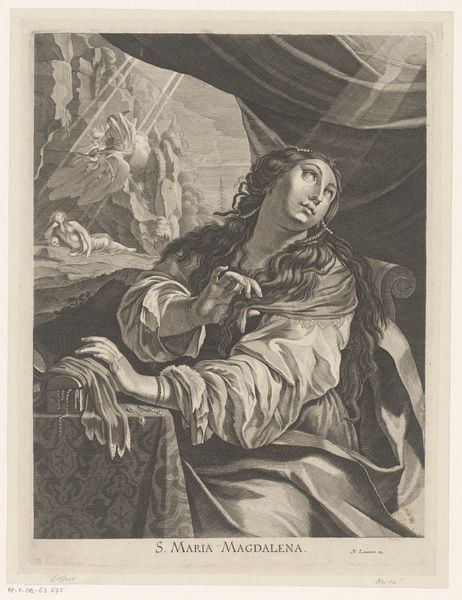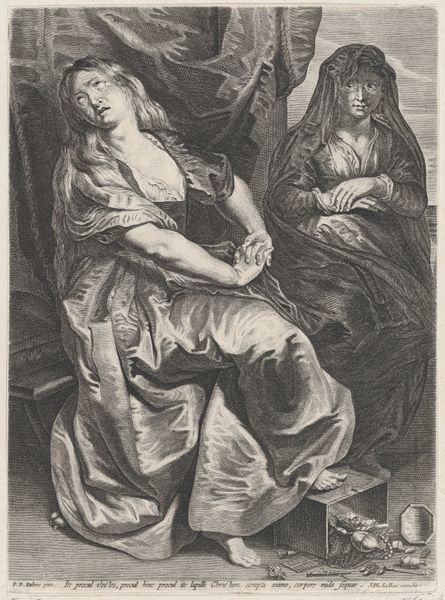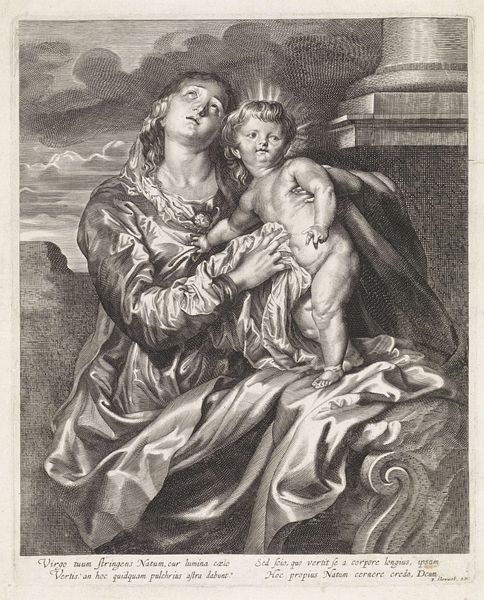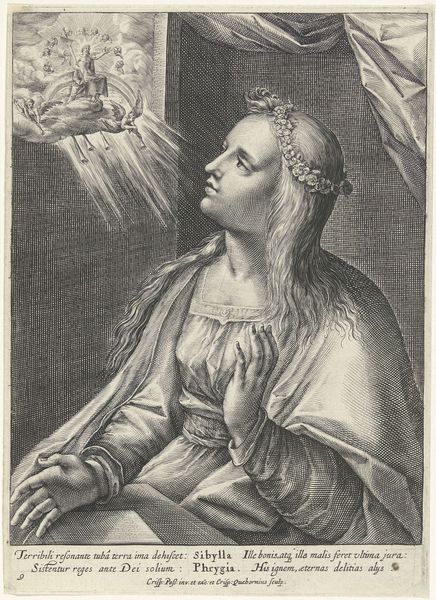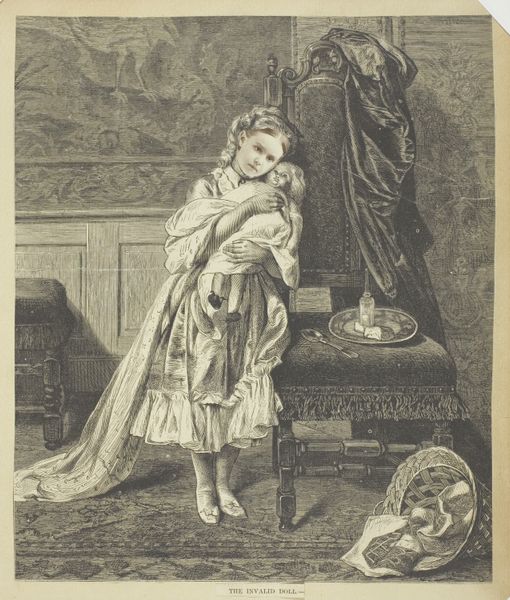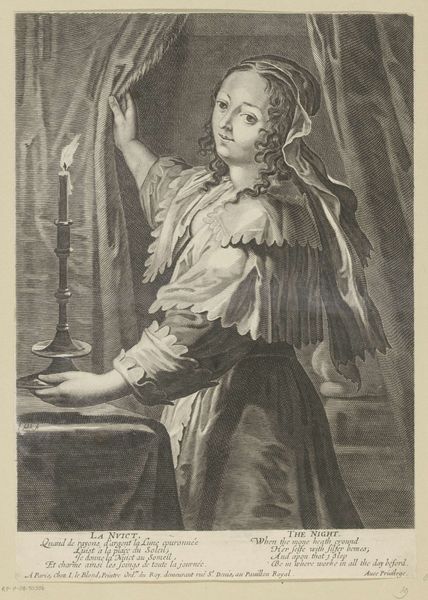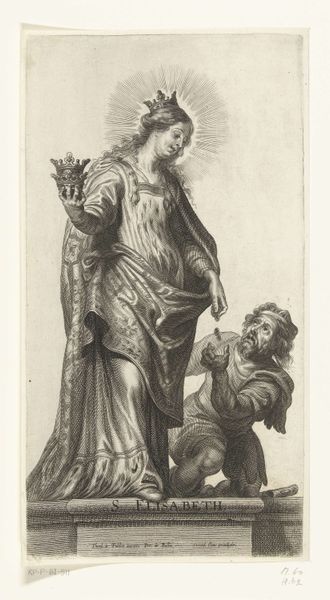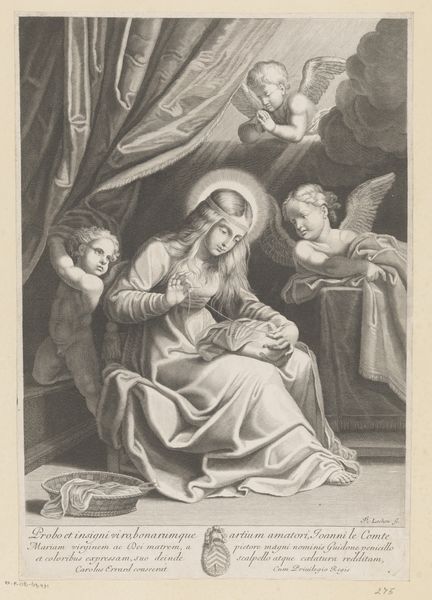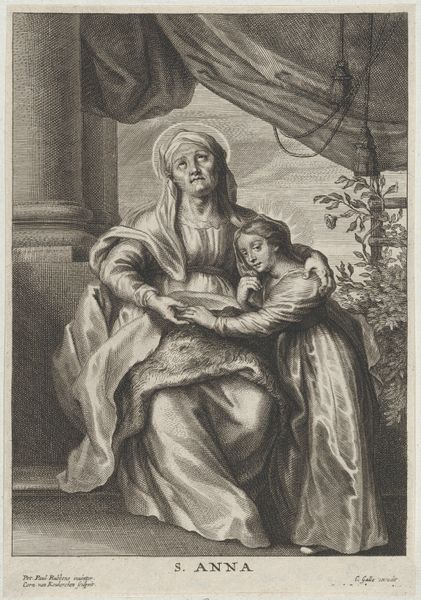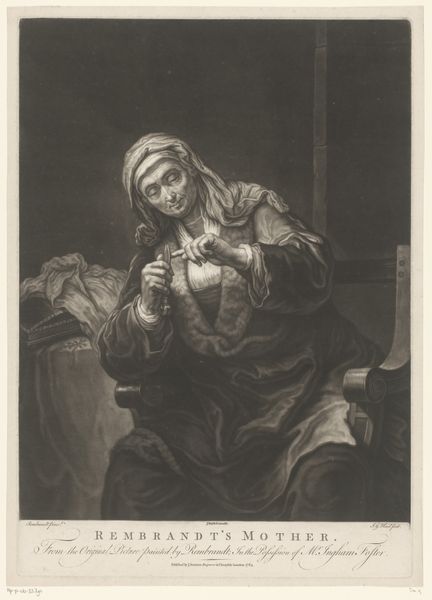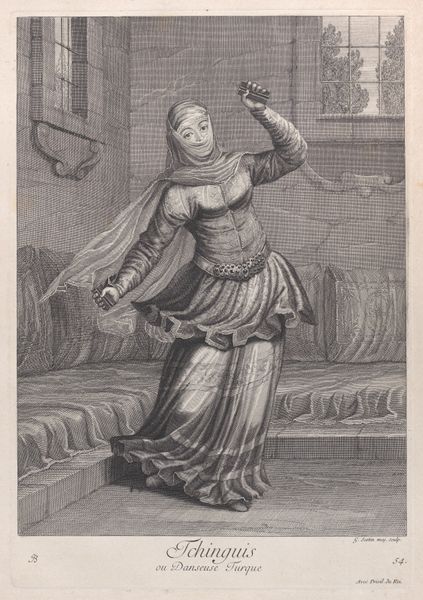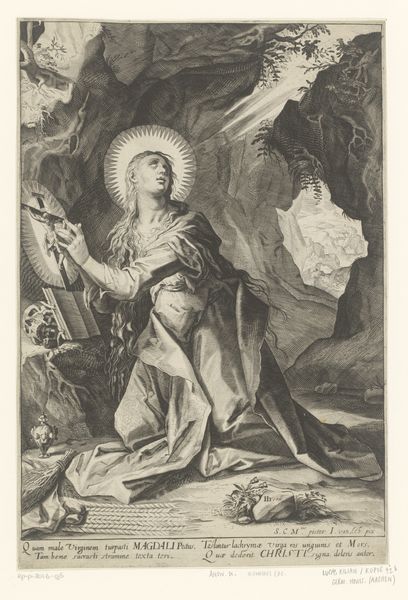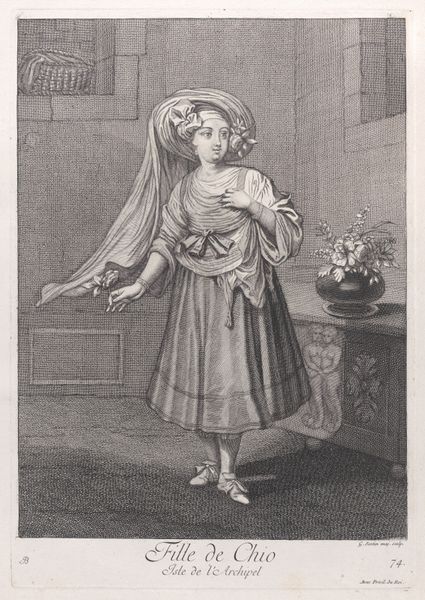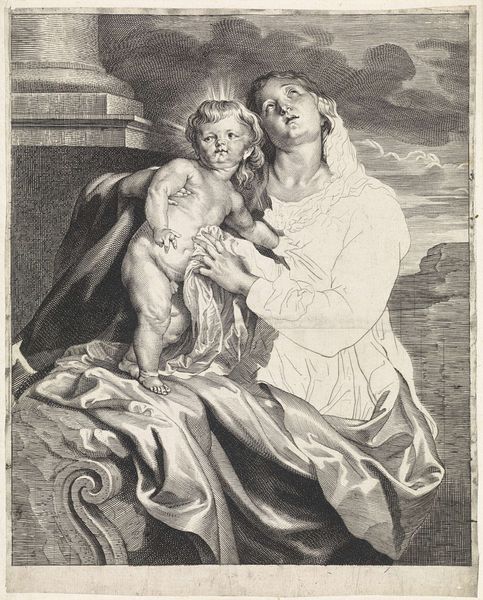
print, engraving
#
portrait
#
baroque
# print
#
old engraving style
#
figuration
#
19th century
#
line
#
history-painting
#
engraving
Dimensions: height 407 mm, width 280 mm
Copyright: Rijks Museum: Open Domain
Jean Couvay made this print of Saint Mary of Egypt sometime in the mid-17th century, using an engraving process. This involved meticulously incising lines into a metal plate with a tool called a burin, a labor-intensive activity, requiring great skill and precision, similar to other forms of highly skilled craftwork. The quality of a print like this depends on the evenness of the ink, the pressure of the press, and the fineness of the lines etched by the engraver. Notice how the varying density of the lines creates tonal depth, with a velvety dark curtain contrasting with the saint's luminous skin. The medium lends itself to intricate detail, seen in the rendering of the saint's dress, hair and jewelry. The final print is more than just an image; it represents a transfer of skill, labor, and material resources. It is a multiple, designed to spread ideas widely, far beyond a single hand-painted picture. By appreciating the material processes involved, we can better understand the social and cultural value of prints like this one, and the labor that went into its production.
Comments
No comments
Be the first to comment and join the conversation on the ultimate creative platform.
